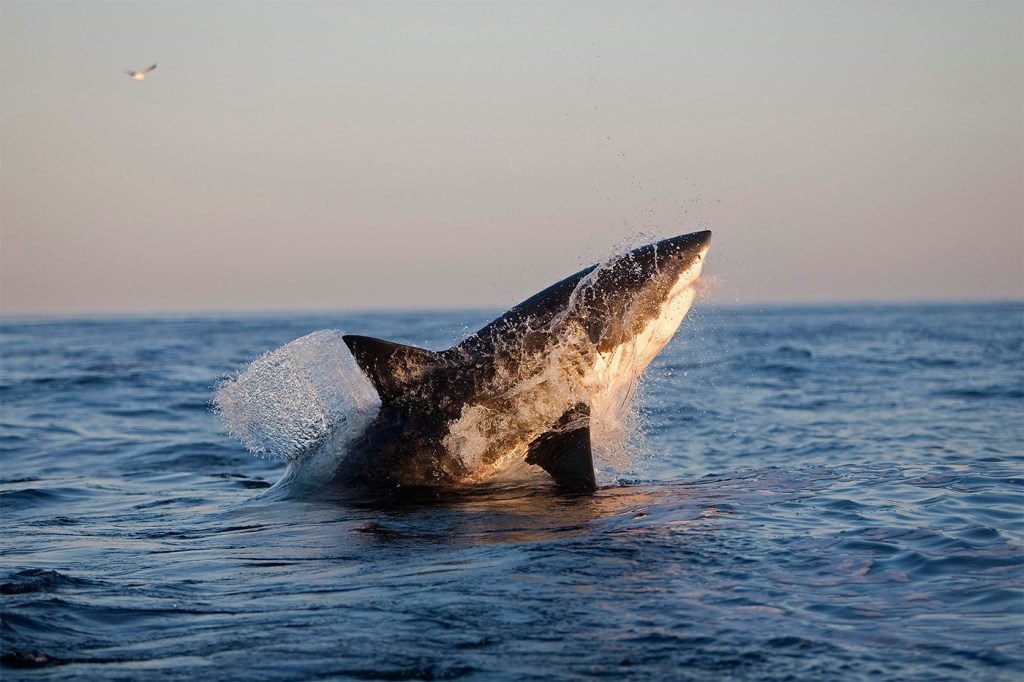You’re more likely to die in a car crash than you are from a shark attack. So why are we more afraid of sharks?
Northeastern risk expert Susan Mello says: “We try to reserve as much of our processing and thinking and attention for things that we really, really care about.”

Summer is winding down, but shark season is heating up: Shark sightings off Cape Cod go up in August and September.
Despite recent attacks, your odds of an actual violent encounter with a shark is very low. And yet, many avoid the water out of fear of an attack.
On the flip side, many people get into a car every day, despite the National Safety Council finding that the odds of an American dying in a car crash are one in 93. The International Shark Attack Files recorded two fatalities from shark attacks in the United States in 2023 and 10 fatalities in total worldwide. The odds of being attacked by a shark in the United States are about one in 11.5 million, and dying in a shark attack about one in 264 million, according to the Florida Museum of Natural History.

Susan Mello, an associate professor of Communication Studies at Northeastern University, has done extensive research on risk perception, health communication and the environment.
She says there are several reasons why we underestimate actual risks to our safety, some of which have to do with the way our brain works.
“We try to reserve as much of our processing and thinking and attention for things that we really, really care about,” Mello said. “The more shortcuts that we can take … to assess the situation more quickly, the better for us, and oftentimes because statistics can be kind of cumbersome … these shortcuts are useful for us.”
We’ve evolved to have quick reactions to potential dangers to protect ourselves rather than sitting and analyzing our risk, Mello explained. This is why you might jump when you see a stick in the woods if you think it’s a snake. The part of your brain controlling these responses is the amygdala, which “sends out stronger, faster responses,” than the brain’s cortex, which controls rational decision-making.
Featured Posts
There are heuristics, or mental shortcuts, that humans use to make decisions, Mello said, such as the representativeness, which refers to stereotypes that we might use to make a decision. For example, if you learn you’re breathing in a chemical, you’ll assume that’s bad because most people think of chemicals as harmful.
Availability involves how quickly we’re able to recall something. If you just read a story about a shark sighting or a whale crashing into a boat, you might be less likely to get in the water. This is especially big in a world where we have a 24-hour news cycle and cellphones that can capture freak accidents, like when a door blew off a Boeing plane earlier this year, Mello said.
“We live in a world that is probably the least risky of all versions of a world that humans have ever lived in,” Mello said. “If you were to look at the actual risk of (a plane door) flying off in a flight, generally speaking it would be very low. But you tend to worry about it more because now you have an association.”
The novelty of the risk and people’s role in choosing it also play a role. Mello said people might be more concerned about involuntary risks than voluntary risks. This is why people might protest being exposed to radiation when going through an X-ray machine at TSA, but choose not to wear sunscreen despite the risks of UV exposure.
“Texting and driving, that’s a voluntary risk that we take,” Mello said. “Voluntary risks tend to be perceived as less harmful than involuntary risks. A lot of people, when they started having those X-ray machines (at TSA) were like, ‘no, this is a health hazard I should not be exposed to.’ In reality, if you were to do an actual risk assessment, their exposure to radiation from UV rays is much higher (from the sun).”
So how do people toe the line between being overly cautious and desensitized? Putting things into context is key, Mello said. For example, learning more about shark attacks and understanding why they’re here in the waters can put risk into context.
“We certainly need to be vigilant about it, but also be vigilant of things that are more likely to hurt you when you’re at the beach, like rip tides,” Mello said. “Having more data is typically a good thing. When you become hyper focused on something that does have a low statistical probability of being a hazard to you, that’s when it becomes a problem.”











